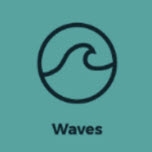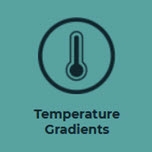

Ocean energy resources are contained in:
 Tidal & Currents
Tidal & Currents
Potential energy associated with tides can be harnessed by building barrage or other forms of construction across an estuary, while kinetic energy associated with tidal (marine) currents can be harnessed using modular systems.
 Waves
Waves
Kinetic and potential energy associated with ocean waves can be harnessed using modular technologies.
 Temperature Gradients
Temperature Gradients
Thermal energy due to the temperature gradient between the sea surface and deepwater can be harnessed using different Ocean Thermal Energy Conversion (OTEC) processes.
 Salinity Gradients
Salinity Gradients
At the mouth of rivers where fresh water mixes with salt water, energy associated with the salinity gradient can be harnessed using pressure-retarded reverse osmosis process and associated conversion technologies.
Other renewable ocean resource concepts, such as hydrothermal vents, along with hybridization of the aforementioned schemes, are also being pursued. With the advent of various novel concepts and reported success of several deployments, the ocean renewable energy sector, especially the field of tidal current and wave energy conversion technology have gained significant attention throughout the world. Many technologies are also being explored for energy uses other than electricity generation, such as, producing drinking water through desalination, supplying compressed air for aquaculture, and hydrogen production by electrolysis.